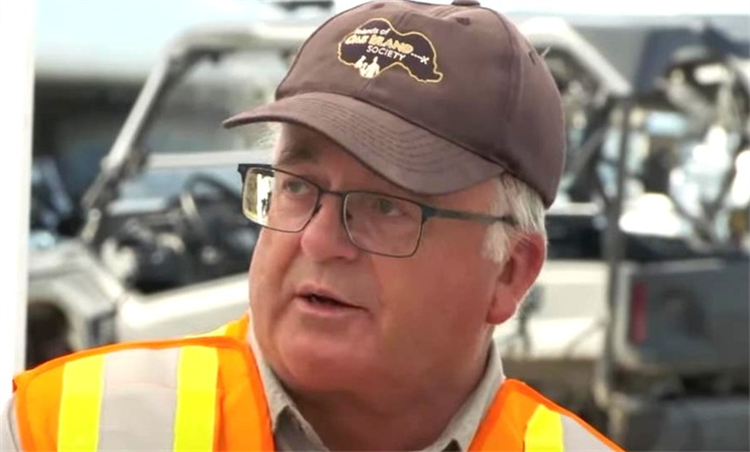If you’re one of the nearly 3 million viewers (via The Hollywood Reporter) who’ve been tuning in to “The Curse of Oak Island” each week to watch brothers Rick and Marty Lagina not find treasure on the small and storied Nova Scotia island, you’re already more than familiar with the show’s most infamous dig site, The Money Pit. If you’re not one of those viewers, it’s like this: In the late 18th century, some teenagers found a succession of planks and man-made objects in a hole in the ground on Oak Island. Further and later excavation of the site revealed a 100-foot deep shaft laden with what true believers have called “booby traps” (via History). The brothers have returned to The Money Pit again and again throughout the series but have yet to discover Knights Templar gold, pirate booty, the golden menorah of King Solomon’s Temple, or the hidden manuscripts of William Shakespeare, all of which have been proposed as the real treasure of the mysterious island.
Although “The Curse of Oak Island” team has worked with several different kinds of experts and theorists over the years, there’s one particular branch of science that the series has often conspicuously avoided, even though such a quest involves a whole lot of digging. That is, of course, geology. This counter-intuitive gap in the team’s approach began to frustrate retired geologist Steven Aitken, who eventually, as he told CBC, decided to “do (his) own research on the geology.” Unfortunately, (for both fans and the series), Aitken’s research — which relied heavily on two reports done by Warnock Hersey and Golder Associates in conjunction with a 1995 report by the Woods Hole Oceanographic Institution — strongly suggests that Oak Island’s most promising dig site is little more than a naturally occurring sinkhole. In other words, it’s just a regular ‘ole pit-pit, not a “money” pit.
Aitken still believes in treasure, despite The Money Pit containing none

Steven Aitken isn’t the first to call The Money Pit a sinkhole. Fans on the “Curse of Oak Island” subreddit suggested as much over four years ago, and the pro-Money Pit Oak Island Treasure site lists the theory as one of many held by skeptics. “Given that the strata beneath Oak Island is basically limestone and anhydrite,” the site reads, “…the surface (of the island) may be characterized by sinkholes.” Aitken is, however, the first to back his theory with extensive research. As CBC reports, limestone and gypsum comprise the bedrock on the island’s east side (where the Money Pit is located). As Aitken points out, “Given the right conditions, such as temperature, pressure, [and] pore fluid composition…these minerals, especially gypsum, [are] prone to dissolution.” Aitken says nearby sinkholes support this disappointing reality, given their proximity and the fact that they’re “not man-made,” but “naturally formed features” that manifest over thousands or millions of years.
Despite his belief that Oak Island’s most “mysterious” landmark is little more than a natural cavity/cave whose roof has collapsed despite historical efforts, Aitken believes there’s plenty of treasure to be found on the island. “To me personally,” he told CBC, “the treasure on Oak Island has already been found in the form of archeological artifacts that have been discovered” and that “tell a rich history about activity on the island.” These finds may be enough to keep the retired geologist watching, but are they really enough to keep viewers coming back, season after season, to watch the brothers wade and dig around in naturally-formed, treasure-less holes in the ground? Considering “The Curse of Oak Island” has just kicked off its ninth season, it would appear so.
